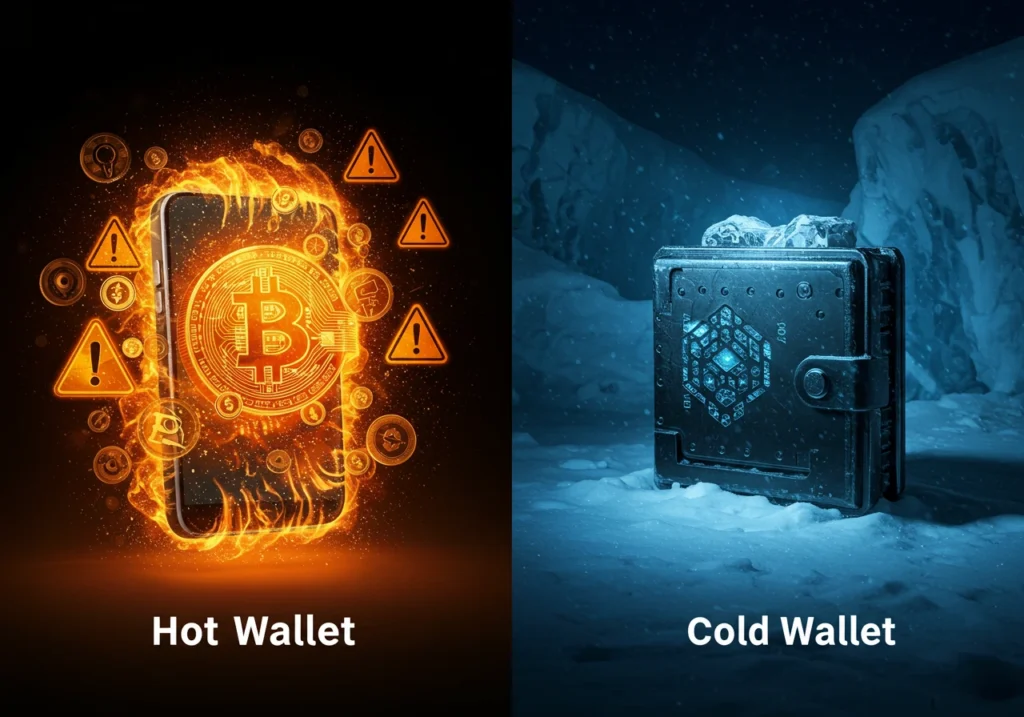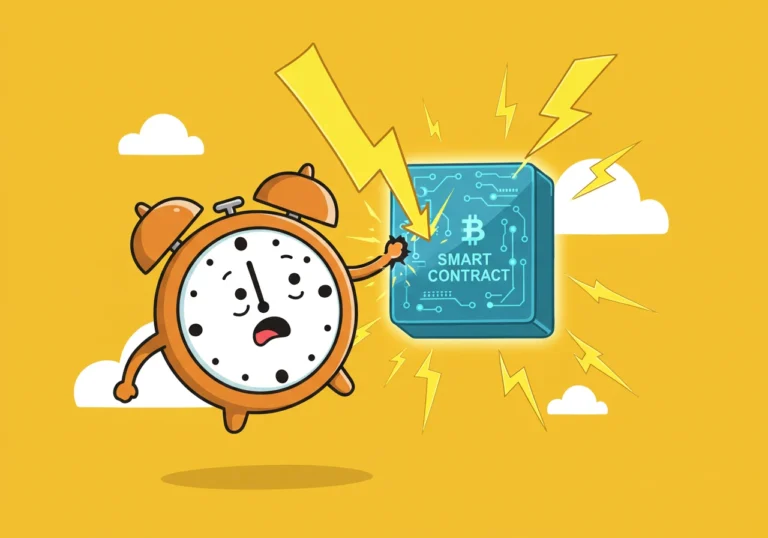Crypto Hacks: Lessons from the Latest Attacks — What Went Wrong?
Crypto Hacks are becoming more visible. When a wallet is drained or an exchange is attacked, stories spread fast. But underneath every headline there are patterns — things that went wrong again and again. By looking closely at those patterns we learn how to build safer habits and stronger systems.
What “Crypto Hacks” usually look like

Crypto hacks take many forms. Sometimes attackers target big exchanges. Other times they trick a single user. Common scenarios include:
- A weakness in exchange software allows attackers to withdraw funds.
- A smart contract used by a decentralized finance (DeFi) protocol contains a bug that attackers exploit.
- A user is tricked by a phishing site and signs a malicious transaction.
- Private keys or seed phrases are leaked from insecure storage.
All of these incidents lead to the same result: assets move from the rightful owners to attackers. The money may be mixed and moved, but the immediate harm is usually the same — people lose funds or access.
Why exchanges are a frequent target: security vulnerabilities in cryptocurrency exchanges
Large exchanges hold many users’ funds. This makes them attractive to attackers. Common security vulnerabilities in cryptocurrency exchanges include:
- Centralized custody with weak controls. If one person or machine has the power to move money, compromise that key and the vault is open.
- Poor internal access control. Staff accounts with excessive permissions or reused passwords make it easier for attackers to roam.
- Outdated software and unpatched servers. Known bugs and unpatched systems are easy entry points.
- Inadequate monitoring. If unusual transactions are not flagged quickly, attackers can drain funds before anyone notices.
- Low test coverage for new features. New code pushed without proper audits can introduce critical bugs.
When an exchange fails in one of these areas, the consequences are large. Users lose money. Trust collapses. The company faces lawsuits and fines. That is why strong operational security and regular external audits are essential.
Smart contract bugs and DeFi failures: preventing cyber attacks on decentralized finance platforms
DeFi brings new risks. Code runs money automatically. Small mistakes can be costly. Here are common causes of DeFi hacks:
- Unchecked assumptions in code. Developers may assume certain conditions that can be manipulated by attackers.
- Poor handling of edge cases. Unusual input values or rare sequences of events sometimes break expected behavior.
- Lack of formal audits and fuzzing. Not testing contracts with rigorous methods leaves hidden paths for attackers.
- Admin keys and upgrade mechanisms. Contracts with central upgrade keys can be abused if those keys are stolen.
The lesson is clear: code is law only when it is well-written, reviewed, and stress-tested. Using formal verification, public audits, and time-locked upgrades helps reduce these lessons learned from recent blockchain security breaches.
Social engineering and phishing: common mistakes in crypto wallet management
Many hacks start with a simple trick. Attackers use social engineering to get users to reveal keys, click malicious links, or sign bad transactions. Common user errors include:
- Clicking links in chat groups or emails without checking the URL.
- Connecting a wallet to a malicious website.
- Approving unlimited token allowances for smart contracts.
- Storing seed phrases or private keys in plain text files or cloud storage.
These common mistakes in crypto wallet management are often the easiest to fix. Slow down. Check URLs. Use a hardware wallet. Revoke approvals when you are done with a dApp. Small habits protect a lot.
How attackers launder stolen funds — and why recovery is hard
After a hack, attackers move money fast. They use a few common techniques:
- Mixers and tumblers to obscure trails.
- Bridges to move assets across blockchains quickly.
- Rapid swaps into stablecoins or other high-liquidity assets.
- Multiple hops across many addresses to hide origin.
Once funds spread across many chains and services, tracing becomes much harder and recovering assets takes time, cooperation from exchanges, and sometimes legal action. That is one reason prevention matters more than recovery.
What went wrong — repeated human and design failures
Studying many incidents reveals repeating themes:
- Single points of failure. A single admin key, server, or person can break an entire system.
- Blind trust in new code. Rushed launches and incomplete audits invite disaster.
- Poor separation of duties. Developers, operators, and auditors sometimes overlap roles too much.
- Neglected ops and monitoring. Without good alerts and controls, symptoms are missed until it is too late.
- User convenience over security. Features that make life easier (single-sign-in, automatic approvals) often widen attack surfaces.
These are not inherently technical problems. They are design and process issues. Fixing them requires changing how teams work.
Best practices for protecting digital assets in the crypto market

Here are clear, practical steps for companies and users. They come from those best practices for protecting digital assets in the crypto market used by teams that take security seriously.
For exchanges and protocols
- Use multisig and hardware security modules (HSMs) for custody. No single key should move funds alone.
- Run regular external audits and bug bounties. Public reviews find problems your team missed.
- Apply strict access controls and segmented networks. Separate duties and use least-privilege accounts.
- Monitor transactions in real time and set strong alerting thresholds. Fast detection stops big losses.
- Stage deployments with canaries and kill switches. Gradual rollouts reduce blast radius.
For individual users

- Use hardware wallets for significant holdings. They keep private keys offline.
- Keep small amounts on hot wallets for trading; move long-term holdings to cold storage.
- Do not share seed phrases or private keys. Treat them like bank vault keys.
- Check URLs and verify smart contract addresses. Use bookmarks for frequent sites.
- Revoke token approvals you no longer use. Tools exist to view and revoke allowances.
- Consider a multisig or Shamir-based backup if you hold large amounts.
These steps lower risk for everyone.
Practical steps to prevent being a victim of social attacks
Social engineering is cunning, but you can be ready:
- Pause before you click. Verify links on another device if you must.
- Confirm unusual requests directly via a known channel (not the one that made the request).
- Educate your friends and family — scams often spread through trusted circles.
- Use separate accounts and emails for important crypto services. Do not reuse passwords.
Careful habits reduce the chance you will be the easy mark attackers look for.
Incident response: what to do if a hack happens
Even with precautions, incidents can occur. A calm plan helps:
- Act quickly. Freeze affected accounts if possible. Change passwords and revoke approvals.
- Document everything. Save transaction IDs, timestamps, and screenshots.
- Communicate clearly. Notify affected users and be honest about what you know.
- Engage experts. Bring in blockchain forensics and legal counsel.
- Coordinate with platforms. Provide evidence to exchanges; they may freeze suspect deposits.
- Patch and learn. After containment, audit the breach and fix root causes.
Good incident response reduces damage and restores trust faster.
Preventing cyber attacks on decentralized finance platforms
DeFi teams must be especially careful because code directly controls funds. Steps to improve DeFi security include:
- Audit each change and all dependencies. Many vulnerabilities come from libraries or oracles.
- Use time locks for upgrades. Give the community time to review and react to code changes.
- Limit permissions. Contracts should not have excessive authority.
- Red-team testing. Invite attackers to test defenses through controlled programs.
- Design for graceful failure. Consider ways to pause or restrict actions safely during trouble.
DeFi is powerful, but it must be built with restraint.
Conclusion — small changes, big differences
Studying Crypto Hacks shows us where the weak spots are. Most failures are not magic; they are repeats of earlier mistakes. Strong systems and careful users cut those mistakes off. Whether you run an exchange, build a protocol, or simply hold a little crypto, practical steps help a lot: separate keys, test code, monitor activity, and keep habits that slow attackers down.
Safety in crypto is not about perfection. It is about steady habits and systems that assume things will fail. If you make those small changes today, you will be far better prepared for whatever comes next.
Main lessons
- Many Crypto Hacks trace back to human or design failures, not mystery.
- Exchanges often fail due to custody, access control, or unpatched systems.
- DeFi hacks usually arise from smart contract bugs, poor testing, or admin keys.
- Common mistakes in crypto wallet management include poor storage of seed phrases and careless approvals.
- Implement best practices for protecting digital assets in the crypto market: hardware wallets, multisig, audits, and monitoring.
- Prevent social engineering by verifying requests and separating accounts.
- Good incident response is quick, evidence-focused, and transparent.
- Preventing cyber attacks on decentralized finance platforms requires audits, time-locks, and careful permission design.
Frequently Asked Questions
Q: Are crypto hacks getting worse?
A: Hack techniques evolve, but defenses do too. The number of exploits shows where improvements are needed. Overall, more mature security practices are emerging.
Q: Can stolen crypto be recovered?
A: Sometimes — if funds land on a cooperating exchange or law enforcement acts quickly. Often recovery is difficult, so prevention is the best option.
Q: Is a hardware wallet enough?
A: Hardware wallets protect private keys but must be used correctly. Combine hardware wallets with safe habits and cold storage for large holdings.
Q: How do I check if a smart contract is safe?
A: Look for public, recent audits and community reviews. Understand the risks and avoid unaudited contracts for large sums.
Q: Should I trust decentralized exchanges less than centralized ones?
A: Both have risks. Centralized exchanges hold custody and face operational risks. Decentralized platforms expose you to code risks. Choose based on your tolerance and the precautions you can take.
Table of Contents

Hello, I’m Edmilson Dias, founder of CoinBringer. I created this platform to guide people through the fast-moving world of cryptocurrency with clarity and safety. With years of research in blockchain and digital security, my goal is to translate complex topics into practical knowledge, offering reliable tutorials, safety insights, and guidance for both newcomers and experienced users.
Discover more from CoinBringer
Subscribe to get the latest posts sent to your email.







